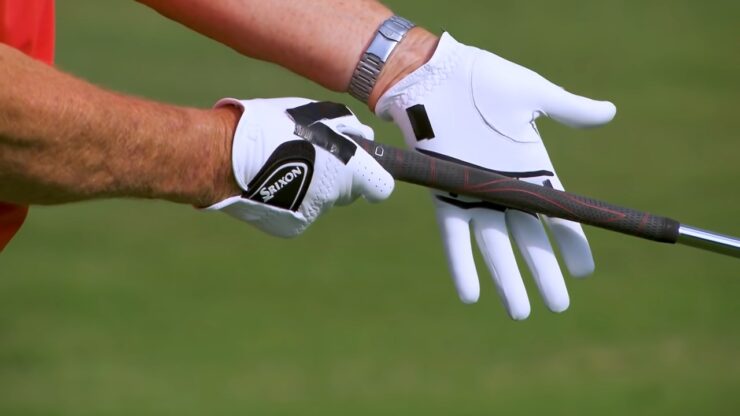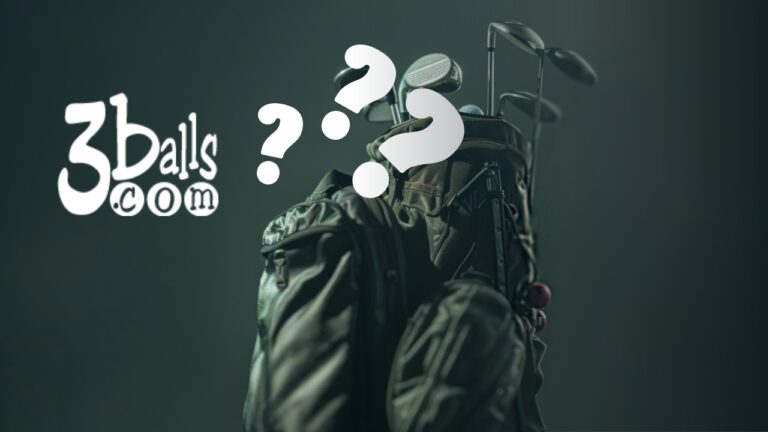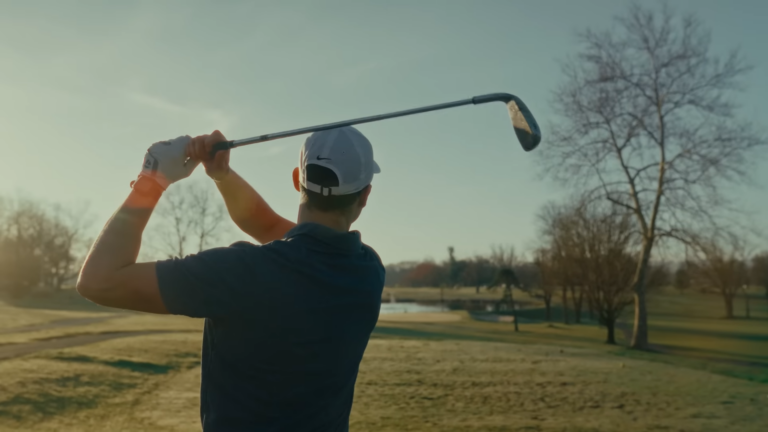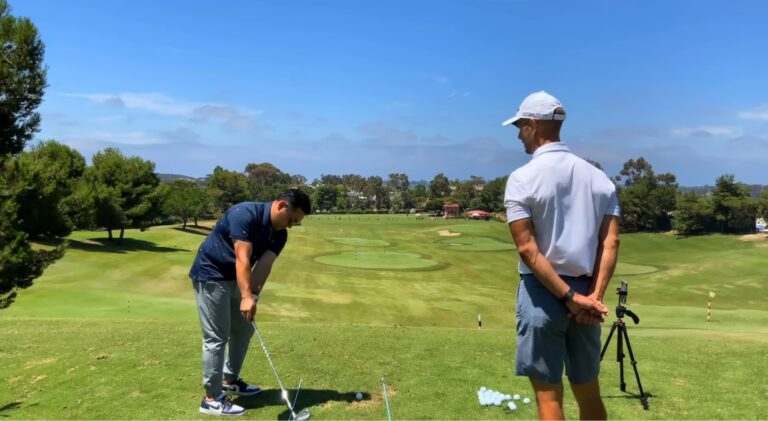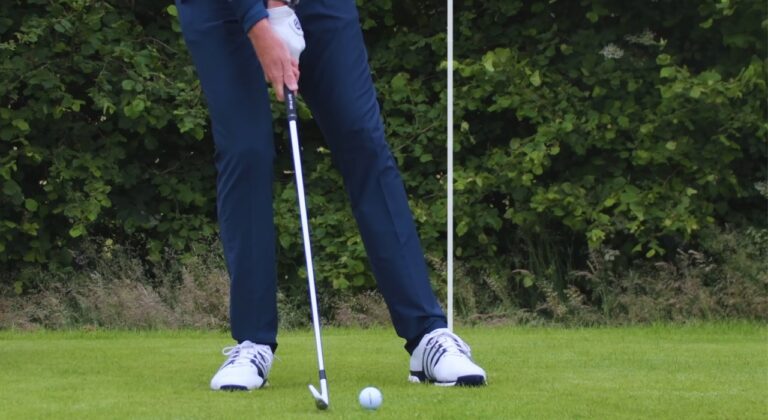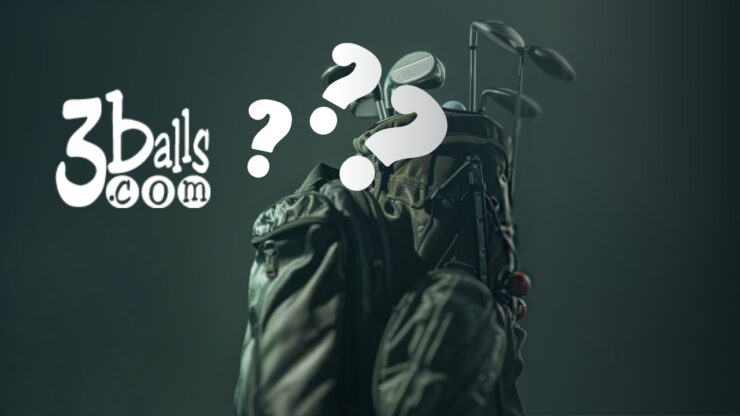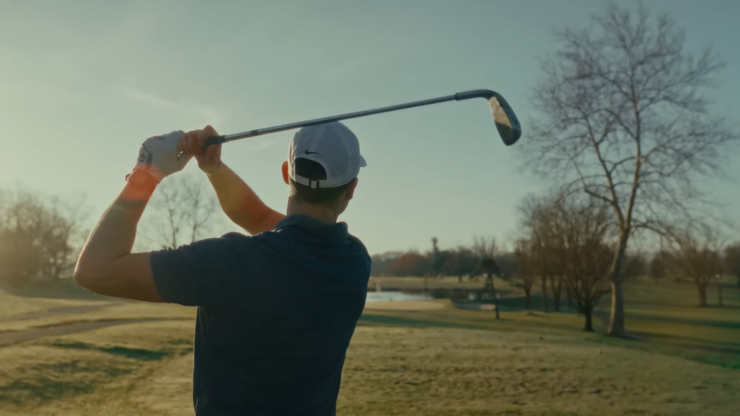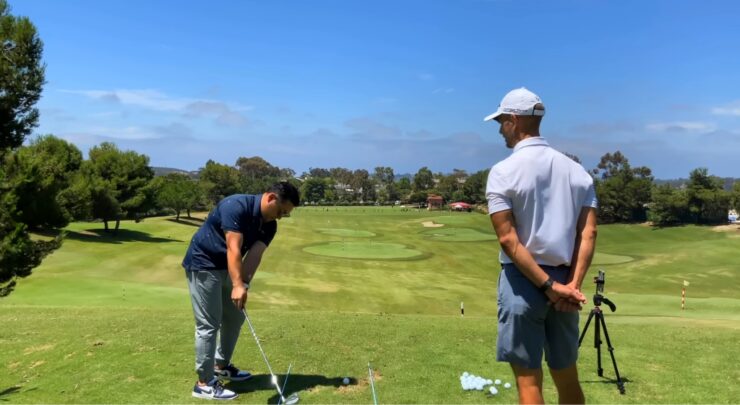Golf, for me, has always been a blend of art and science, and at the heart of that delicate balance lies the grip. It’s fascinating how something that seems so fundamental can have such a profound impact on our game. I remember when I first picked up a club, completely oblivious to the terms “strong” and “weak” grip.
It wasn’t until I delved deeper into the sport, experimenting with my own swings and learning from my countless mistakes, that I truly grasped (pun intended) the significance of these styles.
Through this piece, I hope to share the insights I’ve garnered over the years about how the nuances of your grasp can influence the beauty and effectiveness of your swing.
The Basics
Your grip can define the course of your swing. Before diving into the intricacies of strong and weak grips, it’s essential to understand these fundamentals in golf. The grip in golf refers to how a player holds the club.
While this might sound trivial to a beginner, the positioning of the hands dictates the clubface’s orientation at impact, affecting shot direction and ball flight. They can vary based on hand placement, finger positioning, and even the pressure exerted.
Typically, golfers adopt the one that feels natural to them. However, as they progress, they may tweak their grip style based on the shots they want to play or to correct certain mishits.
Importance of Consistency
Consistency is the cornerstone of a successful golf game. A consistent grasp, irrespective of being strong or weak, provides predictability in shots, allowing golfers to make informed adjustments. Fluctuating between different styles during a round can yield unpredictable results.
Not only does it affect clubface alignment, but it also changes the swing path. By maintaining a consistent, firm hold, golfers can focus on refining other aspects of their swing, ensuring steady progress and a more predictable golf game.
What Characterizes a Strong Grip?
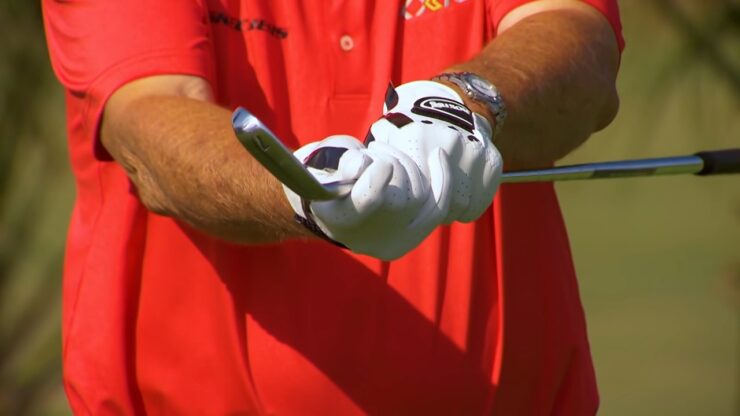
Often misconstrued as a grip with excessive pressure, a “strong grip” in golf terminology refers to hand positioning. Let’s delve into what constitutes a strong grasp and how it can shape your shots.
A strong grip is identified when a player can see three or more knuckles on the lead hand (left hand for a right-handed golfer) when addressing the ball. The V-shape formed by the thumb and index finger of both hands should point towards the golfer’s trailing shoulder.
While this grip is common among power players, it’s essential to understand its implications. A strong grasp naturally closes the clubface, promoting a draw or reducing a slice for players who struggle with an open clubface at impact.
- Benefits:
- Power and Distance: A strong one can harness more power, translating to increased distance.
- Reducing a Slice: Players who naturally slice the ball might find the closed clubface orientation beneficial.
- Challenges:
- Overdrawing: One major pitfall is the risk of overdoing the draw, leading to hooks.
- Limited Shot Versatility: A strong one sometimes restricts a player’s ability to play a variety of shots, especially when finesse is required.
What About Weak One?
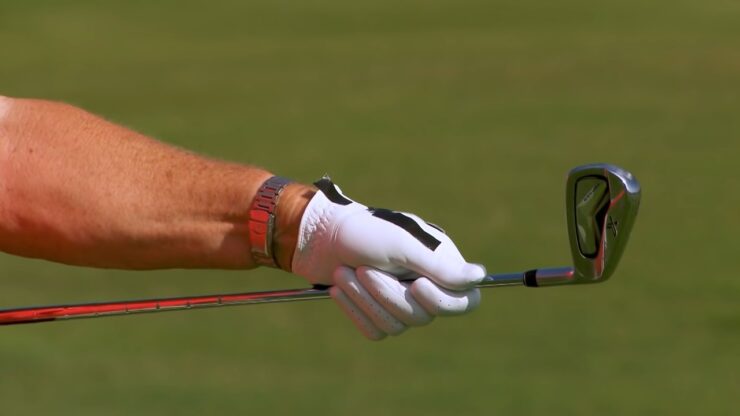
Contrasting with a strong grip, the weak grasp offers a different set of characteristics and results. Here’s what every golfer needs to know. A weak grip is characterized when a player can see only one or no knuckles on the lead hand at address.
The V-shape formed by the thumb and index finger typically points towards the lead shoulder or even the chin. This grip orientation naturally opens the clubface. While it’s often deemed unfavorable for generating power, the weak can be incredibly useful in specific scenarios, offering a unique set of shot outcomes.
- Benefits:
-
- Fade and Slice: For players looking to intentionally play a fade or slice, a weak grip can facilitate this ball flight.
- Precision and Control: Some golfers feel they achieve better shot precision with a weak grasp, especially on controlled iron shots.
- Challenges:
-
- Loss of Distance: Generally, a weak grip might not generate as much power, leading to potential distance loss.
- Struggle Against Wind: An open clubface can produce higher ball flights, making it challenging to play in windy conditions.
Adjusting It for Specific Shots
While the debate between strong and weak grasp will always exist, sometimes the situation calls for a middle ground or a specific tweak. Let’s explore how to adjust your grip for particular shots and conditions.
Adapting for Windy Conditions
In windy conditions, control becomes paramount. A ballooning ball can be the enemy, and your grip can help counteract that. For headwinds, some players slightly weaken their grasp, promoting a lower ball flight to pierce through the wind.
With tailwinds, a slightly stronger grip can help elevate the ball, utilizing the wind for added distance. However, it’s not just about grip; ball position and club selection play crucial roles. While grip adjustment can assist, players must ensure that their entire setup complements the intended shot, especially in challenging conditions.
Manipulating Ball Spin
Your grip can influence the spin imparted on the ball. A strong grip tends to promote more draw spin (right to left spin for a right-handed golfer), while a weak grasp can increase fade or slice spin.
Understanding this can be pivotal in situations where you need the ball to curve around obstacles or when trying to hold a green with a specific landing angle. Mastery over manipulating spin is a sign of an advanced golfer, and while grip plays a role, wrist action during the swing and clubface orientation at impact are equally vital.
Expert Opinions on Different Styles
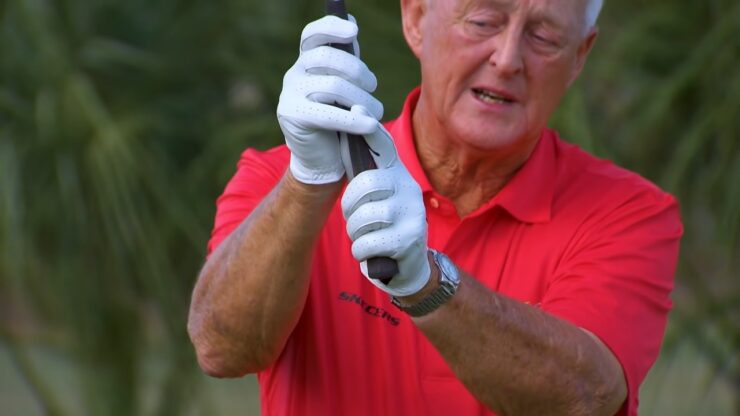
Golf is a game of diverse techniques and philosophies. Top coaches and players have weighed in on the grip debate, and while there’s no consensus, their insights can be enlightening.
Legendary Coaches’ Take
Historically, many coaches advocated for a weaker grasp, emphasizing control. In contrast, more modern instructors like Butch Harmon have discussed the power benefits of a stronger grip, especially in the era of big-hitting tour professionals.
A common thread among these expert opinions is adaptability. Recognizing the strengths and limitations of a player’s natural hold and then making informed adjustments can be more beneficial than enforcing a standard grip style.
Tour Players’ Preferences
When observing the PGA Tour and European Tours, it’s evident that there’s no one-size-fits-all grip. Players like Dustin Johnson employ a stronger grasp, evident in their powerful draws. Conversely, Jordan Spieth’s weaker grasp has led to his controlled fade.
This diversity among the top players underscores a crucial point: the best one is often individualized, based on a player’s biomechanics, swing style, and personal preferences.
Practical Drills for Optimizing
Understanding theories is one thing, but translating that knowledge onto the course is where
the magic happens. Here are some drills to fine-tune your grasp. For those working on strengthening their grasp, a simple visual cue can help.
By adjusting your lead hand so that the logo on your glove points more towards the sky, you can ensure a stronger grasp position. Practice taking your grip and checking this visual regularly.
Over time, this will become second nature, and you can adjust as needed based on the shot at hand. Place a tee in the grasp end of your club, extending outwards. As you swing, the direction the tee points can give feedback and wrist action.
If the tee consistently points to the sky during your backswing, your grip and wrist hinge are likely in a weak position. Conversely, if the tee points behind you, you’re in a stronger position.
This instant feedback is invaluable, especially when making minor tweaks to your grip style or when trying to understand wrist dynamics during your swing.
Common Misconceptions
In the world of golf, myths abound. Grip is no exception. Let’s debunk some common misconceptions about strong and weak grips.
Pressure Myths
One prevalent myth is equating “strong” grip with tight, forceful grip pressure. In reality, a “strong” grip pertains to hand positioning, not the amount of force exerted. Similarly, a “weak” grip doesn’t mean a lax or loose hold.
It’s essential to understand that grasp pressure should remain consistent, allowing for a fluid swing. Too much pressure can restrict wrist movement, while too little might lead to a lack of control.
The One Right Myth
Many beginners are led to believe that there’s one universally correct grasp. While foundational principles guide, individual nuances can and should be adjusted based on a player’s unique swing mechanics and desired ball flight.
Some of the best players in history had unconventional grasp, yet they optimized them to complement their swing. It’s about finding what’s effective and repeatable for the individual, rather than adhering strictly to textbook standards.
Interplay between Grip and Other Swing Mechanics
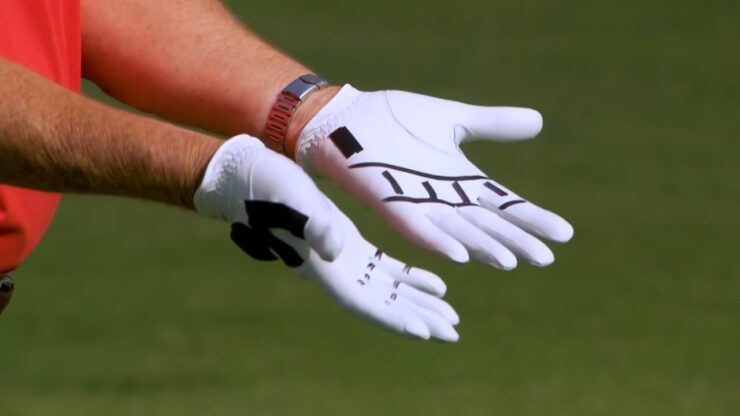
A golfer’s grip doesn’t exist in isolation. It’s a piece of a larger puzzle, intricately linked with other facets of the swing.
With Wrist Hinge
The way a golfer grips the club can influence wrist action. For instance, a stronger grasp might encourage a more pronounced wrist cock, leading to a steeper swing plane. Conversely, a weaker grasp might promote a flatter wrist hinge and, subsequently, a shallower swing.
Understanding the relationship is crucial, especially when making swing adjustments. A change in grasp can inadvertently affect wrist dynamics, which, in turn, can influence swing path and clubface orientation at impact.
With and Posture
Believe it or not, how you hold the club can subtly influence your posture and stance. A stronger grasp might lead some players to set up with a more closed stance, aligning with the expected in-to-out swing path.
Conversely, a weaker grip might correlate with an open stance, given the out-to-in path it tends to promote. While these aren’t hard and fast rules, being aware of such tendencies ensures that golfers can maintain a harmonious relationship between grasp and stance.
FAQs
Can the right equipment help improve my grip?
The size, texture, and material of your club’s grip can influence hand placement and comfort. Ensuring you have the right grip size and material tailored to your needs can make it easier to maintain a consistent hand position.
Is one grip style better than the other for beginners?
Neither grip is universally better for beginners. However, many instructors start new players with a neutral to slightly strong grip to promote a square clubface at impact. As the player develops, adjustments can be made based on individual swing characteristics and preferences.
Can I switch between grasp styles during a round based on the shot I’m facing?
While it’s possible to adjust it styles for specific shots, consistency is key in golf. Constant change can introduce more variables and reduce consistency. It’s generally better to have a go-to grip and make smaller adjustments as needed for specific shots.
How do I know if my grip is causing swing faults or inconsistencies?
If you’re experiencing consistent mishits, unwanted ball flights (like a persistent slice or hook), or discomfort during the swing, it just might be a contributing factor. Analyzing your swing with a coach or using video can help pinpoint if the grip is the root cause.
Does grip strength influence distance?
While grasp style can influence ball flight and potentially the distance, the term “grasp strength” in golf doesn’t refer to physical strength. However, the positioning of the hands can affect the clubface orientation at impact, which in turn can influence the distance, especially if it affects the loft presented at impact.
Summary
Looking back, I’ve come to realize that understanding the intricacies of the grip is akin to mastering the essence of golf itself. It’s not just about strength or weakness in isolation; it’s about how these styles become an integrated element of our overall strategy.
Both weak and strong grips mean the world of difference in particular moments. That’s why commiting enough time to master them is crucial.
Related Posts:
- Role of Nutrition and Hydration in Optimizing Golf…
- Golf Swing Instruction and Tips for Beginners -…
- Top 10 Best Putter Grip Review 2024 - Improve Your…
- Best Way to Grip a Golf Club - For Left Handed and…
- Best Online Golf Lessons to Spruce up The Golfer in…
- Top Golf Fitness Exercises to Improve Your Game -…

